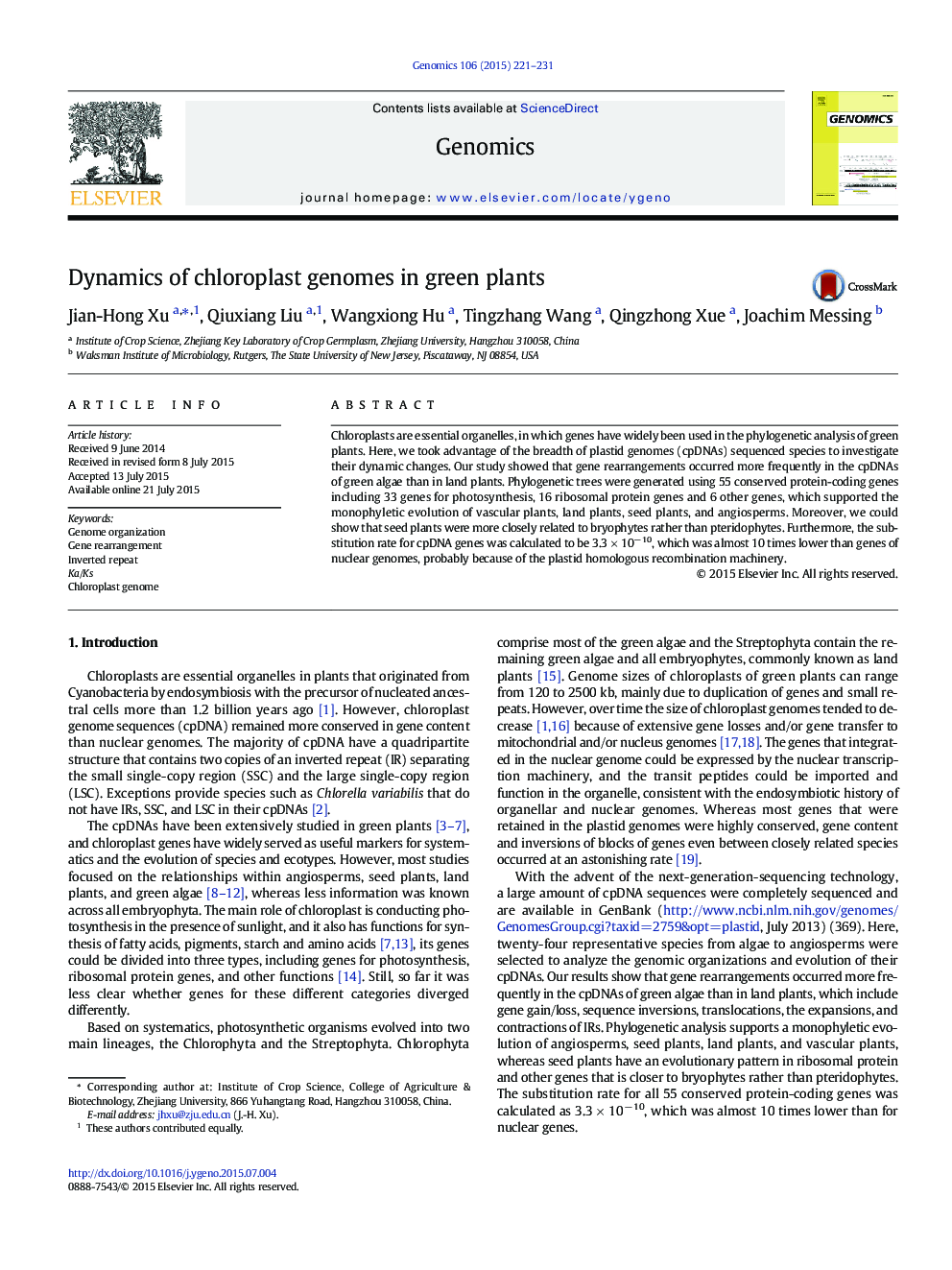| Article ID | Journal | Published Year | Pages | File Type |
|---|---|---|---|---|
| 2820619 | Genomics | 2015 | 11 Pages |
•Seed plants were more closely related to bryophytes rather than pteridophytes.•Parallel gene losses occur frequently in separate lineages in cpDNA.•The evolution of cpDNA gene was almost 10 times slower than the nuclear gene.
Chloroplasts are essential organelles, in which genes have widely been used in the phylogenetic analysis of green plants. Here, we took advantage of the breadth of plastid genomes (cpDNAs) sequenced species to investigate their dynamic changes. Our study showed that gene rearrangements occurred more frequently in the cpDNAs of green algae than in land plants. Phylogenetic trees were generated using 55 conserved protein-coding genes including 33 genes for photosynthesis, 16 ribosomal protein genes and 6 other genes, which supported the monophyletic evolution of vascular plants, land plants, seed plants, and angiosperms. Moreover, we could show that seed plants were more closely related to bryophytes rather than pteridophytes. Furthermore, the substitution rate for cpDNA genes was calculated to be 3.3 × 10− 10, which was almost 10 times lower than genes of nuclear genomes, probably because of the plastid homologous recombination machinery.
